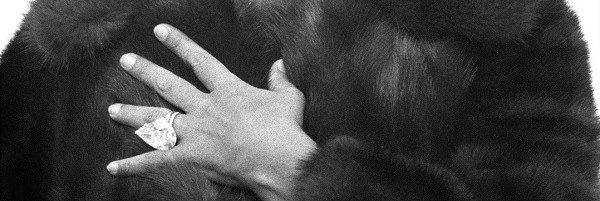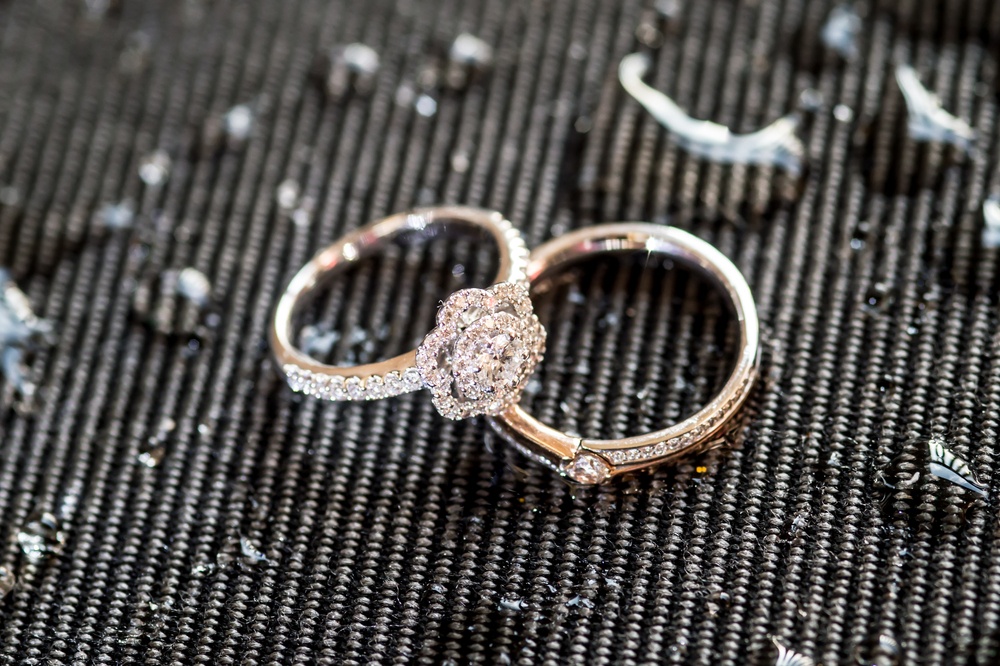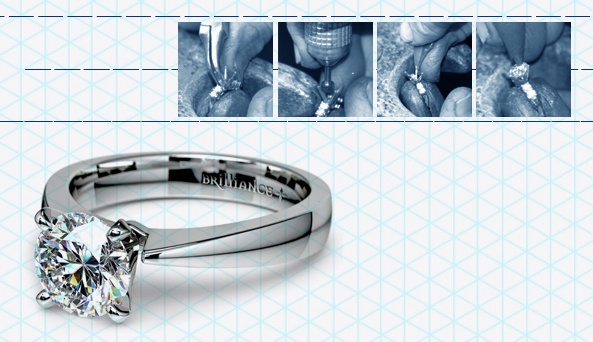Diamonds have helped shape the history of the world and continue to do so. Beyond being jewelry pieces, many historical landmarks and events revolve around unforgettable diamonds and gemstones; their brilliance and beauty transcending time and capturing the world’s imagination. Here is a list of ten of these well-known sparklers and what they became famous (or infamous) for:
The Cullinan
Considered the largest rough diamond of gem-quality ever to be found, The Cullinan was the source of 105 diamonds, including the famous Cullinan I and the Cullinan II. Discovered in the Premier Mine near Pretoria, South Africa in 1905, it weighed a whopping 3106.75 carats before the Asscher Brothers of Amsterdam began cutting it into its 105 parts.

The Great Star of Africa
The Cullinan Diamond’s most famous daughter is The Great Star of Africa, or The Cullinan I. It remains part of the British Crown Jewels as the topping piece for the Sceptre with the Cross, and is the second largest cut diamond in the world at 530.4 carats, surpassed only by the Golden Jubilee Diamond discovered in 1985.

The Hope Diamond
Aside from its undeniable beauty, the Hope Diamond boasts an unparalleled history. Most likely mined in India, a French gem merchant sold the rough stone to Louis XIV, who had it cut from its original 112 carats to 67.50 carats and named the Blue Diamond of the Crown of France. However, it was stolen during the French Revolution, and resurfaced with its current name 20 years later, conveniently after the statute of limitations for the theft expired. The stone has since changed hands (and carats) several times, traveling from the UK to the USA. Rumors of disaster for the owners of the Hope Diamond sprung up in the early 1900s. Though largely discounted and regarded as an attempt to increase the value of the stone by increasing its fame, the legend of a curse from the Hindu goddess Sita stuck. The ironically named Hope Diamond now resides at the Smithsonian Institute after its final private owner, Harry Winston, donated the stone in hopes that it would encourage the creation of a national gem collection in the United States.

Koh-i-Noor
Koh-i-Noor means “Mountain of Light” in Persian. Appropriately named, this brilliant diamond originates from India, dating back as far as the 13th century, if not before. It has a total weight of 105.6 carat. The stone passed through many hands of the ruling class of the Persian, Afghan, and Indian societies of the time, including Shah Jehan, the Mughal emperor famous for the construction of the Taj Mahal. After the death of its final Indian owner, Maharajah Ranjit Singh, the British Empire forced the surrender of the stone, and it was presented to Queen Victoria as she assumed the position of Empress of India. It was worn in coronation ceremonies by three more British queens after being cut to its current size and set in the crown of the female consort to the Monarch of the United Kingdom. Currently on display in the Tower of London, India recently initiated claims that Britain should return the diamond given the dubious nature of the transition of ownership. British authorities remain steadfastly opposed to giving the stone back to India.

The Regent
Discovered in Golconda by an Indian slave in 1698, the rough form of the Regent weighed 410 carats. It was cut in England, and its perfection and brilliance gave it the reputation for being the most beautiful diamond in the world. It has since adorned the crowns of Kings Louis XV and XVI and Charles X, and also the hilt of Emperor Napoleon Bonaparte’s sword. The Regent is now on display at the Louvre with the rest of the French Crown Jewels.

The Idol’s Eye
Another famous diamond found in India, it has a polished and cut size of 70.20 carats, roughly the same size as a small chicken egg. Various accounts of its early history exist, though most of them have proven to be fictitious. What is known is that the stone appeared at auction at Christie’s in London in 1865 and made its way into the hands of the Ottoman sultans. Eventually, famed jeweler Harry Winston obtained the stone and sold it to American socialite and gem collector May Bonfils Stanton. After her death, the stone entered the private market, and is currently owned by a private collector.

The Orloff
An exceptionally pure and clear bluish-green diamond, The Orloff of India is believed to be around 190 carats, but has never been weighed. It’s another gemstone with a rich, befuddling history behind its beauty. The Orloff was believed to have been set into a Hindu god statue as the eye before it was stolen by a Frenchman in the 1700s, sold to an English ship captain, traveled to Europe, and was eventually bought by Count Grigory Orlov and given to Catherine the Great of Russia in an attempt to win her affections. It is now on display at the Diamond Treasury in Moscow, set on the Imperial Sceptre commissioned specifically for the stone by Catherine and completed in 1784.

The Taylor-Burton
A young diamond, diamond miners in the Premier Mine in South Africa unearthed the 241 carat rough stone in 1966. After being cut by Harry Winston, the stone passed through a few owners before Cartier purchased the diamond, selling it shortly after to actor Richard Burton. he presented the stone, mounted in a Cartier diamond necklace and weighing in as a 69.42 carat pear shaped diamond, to his then-fiancee Elizabeth Taylor. The famous actress cherished it, but sold it after she divorced Burton and used the $5 million dollars to build a hospital in Botswana. The diamond is currently owned by Robert Mouawad.

The Sancy
Also on display at the Louvre, this shield-shaped, 55.23 carat pale yellow diamond once belonged to a French Ambassador to Turkey named Nicolas de Harlay, seigneur de Sancy, who loaned it to Henry III to set into a cap that hid his baldness. Seigneur de Sancy also loaned the diamond to Henry IV, and eventually sold it to James I of England. The Sancy eventually disappeared during the French Revolution. It resurfaced for short periods throughout history until being sold to the Louvre in 1978.

The Great Mogul
Many believe that the Great Mogul diamond was part of the Taj Mahal built for Shah Jehan, and that it had a rough weight of 793 carats. Like many large, old stones from India, it changed hands through conquest multiple times between 1650 and 1747. Though some contest its existence as mere fable, plenty of historians are willing to attest that the Orloff was in fact cut from The Great Mogul after a history of exchanging hands. More likely, it was stolen and cut into many smaller diamonds in order to disguise their origin.





